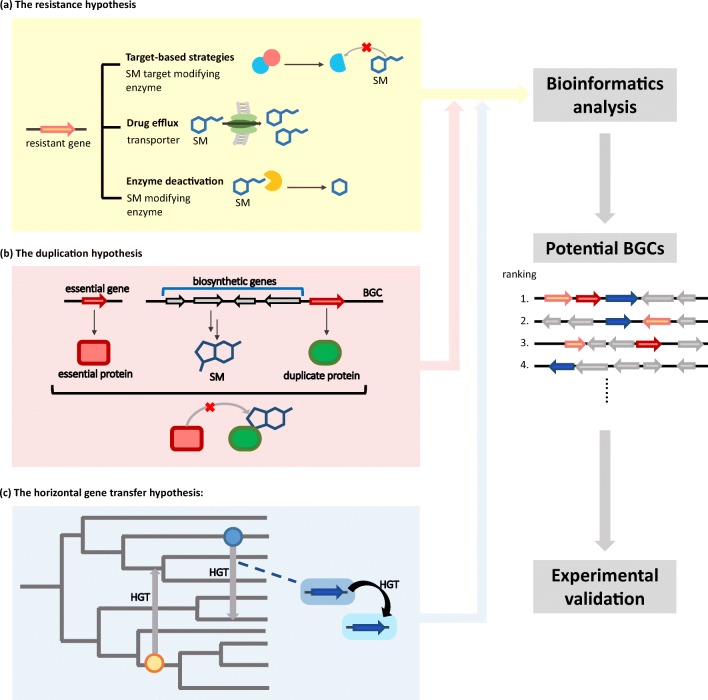Fig. 1.
Overview of biological aspects underlying biosynthetic gene cluster (BGC) target-directed detection. Three hypotheses, numbered a–c, are presented here. a The resistance hypothesis comprises three notable models: target-based strategies, drug efflux, and enzyme deactivation. In the target-based strategies, the resistance gene is involved in target modification, in which the encoded protein can modify the SM-targeting protein, which is a drug receptor in drug-targeting strains or a nascent target in SM-producing strains. The resistance gene involved drug efflux encodes a transporter for pumping out the SM. For enzyme deactivation, the resistance gene encoding the enzyme modifies the SM and then deactivates it. b The duplication hypothesis holds that the SM producer harbors a protein isoform (duplicate protein) of an essential protein. Therefore, it protects the essential protein that the toxic SM targets by providing excess targets or proteins with greater binding affinity. c The horizontal gene transfer hypothesis of core genes is a potential way for microorganism to gain genetic advantage for self-protection. Bioinformatics analysis is applied to scan for BGCs that contain genes matching the three hypotheses. The output BGC candidates will be validated with experiments such as refactoring BGCs, identification of the corresponding SM product, and evaluation of biological activity

